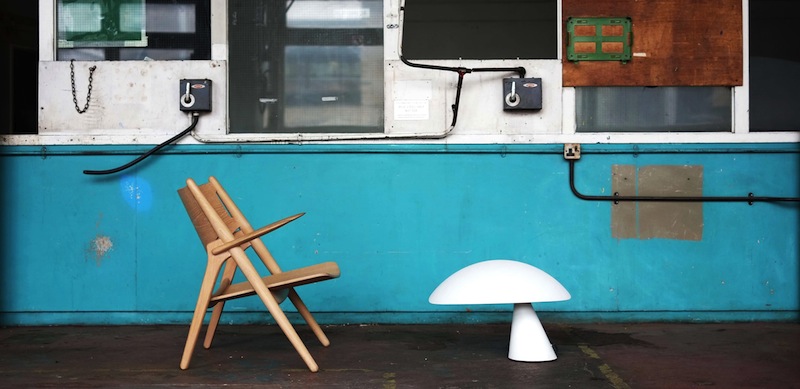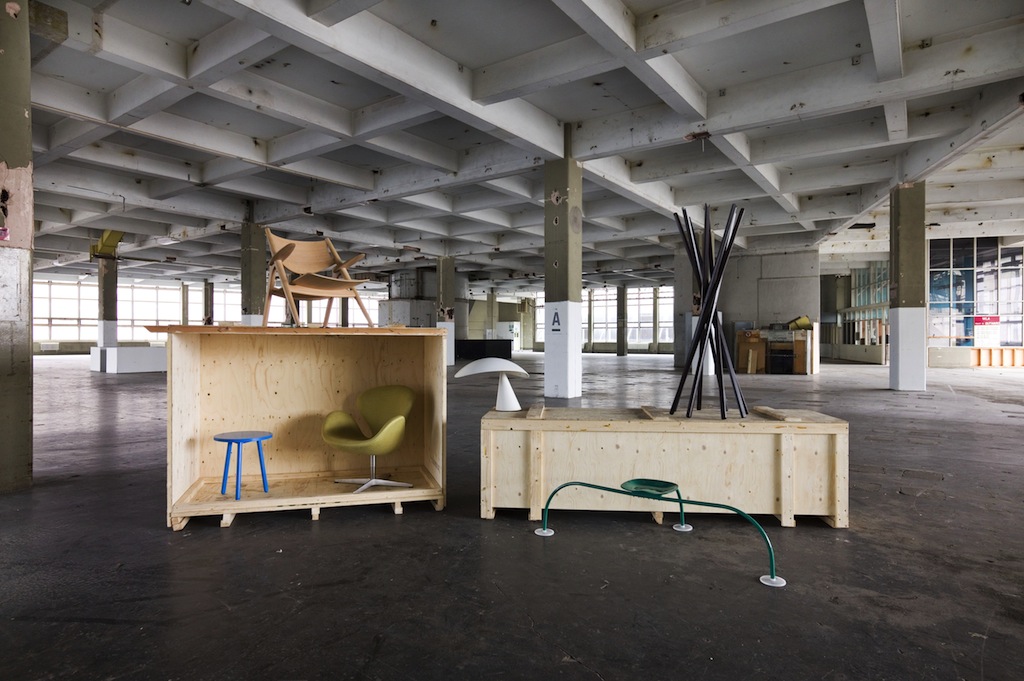LDF: Design Junction
Design Junction was set up for four days during LDF at the enormous, industrial and atmospheric Old Postal Sorting Office on Oxford Street. These pictures show what it looked like before everyone arrived.
There was a lot of hype about Design Junction this year, not just from the media, but from the promotors of the event itself. I received nearly 50 pre-show newsletter emails in the lead-up to it. The show had been a hit last year, and it seemed like they were determined to repeat it.
I know I wasn't alone in finding the scale of this year's show daunting; on the upper two floors there was so much to see it was actually quite overwhelming and hard to process. The Old Sorting Office is gargantuan and has a light industrial past that is visibly peeling off its concrete walls which creates a brilliant atmosphere, and it certainly made you feel like you were in a place where things were happening - with a pop-up Jamie Oliver Barbecoa restaurant and Transport for London micro-brewery - but it was hard to pick individual things out... there was just SO MUCH stuff.
However, I did love the ground floor retail section which hosted over 30 independent design-led pop-up stores. It seemed to me a great way for them to meet not only industry insiders, but also meet the general public (it was free to get in to the show) - and for the public to be able to meet them.
Since I started doing Indie of the Week, I've spoken to lots of people who run independent shops and labels, and I've noticed that they often start online first and only go for bricks and mortar shops once they have established a following. As I wandered around this colourful, buzzy, dynamic space [it reminded me a bit of the old Kensington Market, apols if you're under 35] I was struck by how many exciting independent traders there were and how - without a middle man/shop front between brand and consumer - shows like this are vital for these businesses. Pictured below are few of the things that caught my eye:
Beautiful, tactile, simple designs by aelder who are Natasha Lawless and Floyd Maclean
Lovely copper cards by Scottish-based Lovely Pigeon who also make prints and jewellery
Powerful colour and print combos by Kangan Arora who is based in North London but comes from Northern India. I just love saying her name
A fun and clever idea from Not Another Bill : you sign up and once a month you, or a friend, receive a surprise present in the post. They say: you'll be happier to see the postman and you'll discover new artists and designers.
I do like the Eley Kishimoto wallet notebook with zip lock pouch for receipts, business cards etc from Quill London
After the event I quizzed Lucy Edmonds from Quill [who was one of the first Indie of the Week's and was exhibiting there for the first time] about her experience. She said it had been a great way to interact with a huge number of people who had never encountered her brand or product before. She had felt she'd done well on sales, but this was counteracted by expensive stand costs. However, she acknowledged there was unquantifiable PR value to doing such a well publicised show. As an online only venture it’s important to take advantage of shows like this to meet the public and she found it valuable to observe what products people were drawn to and conversely what wasn't catching people's eyes. Because of the tactile nature of the products she sells it was good to show them in the flesh, she noted several lines that well well at pop-ups, but less well online, and vice versa.
So, while trade shows are often preaching to the converted, I felt that Design Junction was doing a good job of bringing new design to a wider audience.







